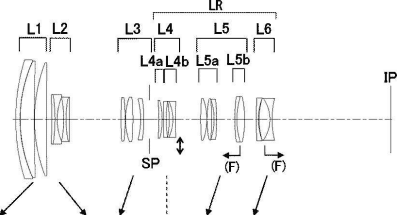Follow us:
Canon Patent For 70-400 f/4.5-5.6 Lens

Egami (translated) spotted another patent filed by Canon. It appears that Canon is working on a 70-400mm f/4.5-5.6 lens.
- Patent Publication No. 2014-21256,2014-21257
- Publication date 2014.2.3
- Filing date 2012.7.18
- Example 2
- Zoom ratio 5.45
- Focal length f = 71.33-144.71-388.95mm
- Fno. 4.63-4.84-5.83
- Half angle ω = 16.87-8.50-3.18 °
- Image height Y = 21.64
- 240.00-284.68-303.83mm overall length of the lens
- BF 75.92-79.30-95.93mm
- 6-group zoom of positive and negative positive and negative positive and negative
- (Part of the fourth group) anti-vibration
- Rear Focus (Group 6)




